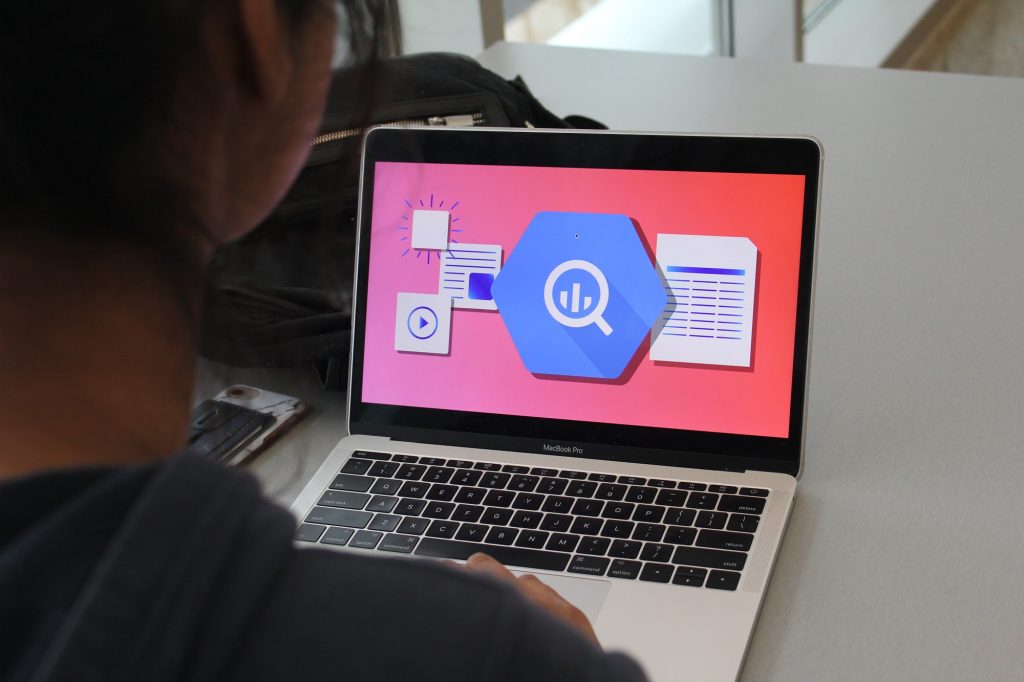

Last year, there were over 4.3 billion active internet users globally, which is approximately 57% of all living humans. According to market research firm We Are Social, each of those users spent 6 hours and 48 minutes online per day on average. That means that the average internet user spent just 6 minutes less on the internet each day than the average person spent sleeping each night.
While it feels intuitively obvious that the human experience is becoming increasingly digital, it can be easy to forget the sheer scale of this fundamental shift in our society. As we all greet the 2020s, I believe it’s worth looking back on some of the most dramatic changes from the past decade, and in particular the past five years. Most of us have heard about the sexy side of change through technology, with stories about virtual reality, drone deliveries, and cryptocurrency making big headlines. Odds are even the family members you might not consider tech savvy have mentioned at least one of these things at Thanksgiving dinner. Gadgets like these have a way of grabbing our attention with flashy features and big promises. In reality, however, most of them are just a flash in the pan. Virtual reality is still a niche market, drone delivery will face years of legislative hurdles, and cryptocurrency’s rise ended in a monumental crash which wiped out some peoples’ life savings. Obviously this is a somewhat tongue-in-cheek analysis of these things, but the core sentiment rings true. While such innovations produce pockets of change, they are far more limited in scope than some of the more subtle, yet boring changes related to technology. In my opinion, the real story of the past decade is the global explosion of smartphone usage. This simple shift has reshaped our world by transforming attention into a commodity, thereby creating a new global economy fueled by targeted advertising and personalized content. Tech giants like Google and Facebook have capitalized on this change by monopolizing consumer data: the equivalent of digital gold. That valuable information is used to segment users into personalized groups before feeding them addictive content full of ads. As users spend more time online, the companies get more data, which allows them to create even more addictive content full of ads. It’s a self perpetuating cycle which is consuming an increasingly inordinate amount of peoples’ lives for unfair capital gain. Here, I’ll refer to this symbiotic relationship between digital content and digital advertising as the “attention economy.” Based on a deep dive into global statistics and societal trends, it seems clear that the attention economy — as fueled by widespread smartphone usage — is producing more harm than good. In addition, the problem takes place on such a grand scale that it can feel almost insurmountable. That being said, we’re far from powerless in this situation. The most effective solution is as straightforward as it is difficult: we need to spend less time on our phones.
As I was writing that last sentence, I could almost feel myself age 50 years. It’s the kind of argument you expect to hear from your grandma, not some 20-year-old in student media. While that may have certainly been the case for many years, things appear to be changing. In 2018, a Pew survey found that 39% of US adults aged 18-29 described themselves as being online “almost constantly,” and a full 63% of all US adults said that they were actively trying to limit personal smartphone use. In short, what used to be a common warning from older generations is now becoming a key concern for many young people as well. If you look at the numbers, it’s easy to see why.

Let’s think back to that first statistic, which said that in 2019 the average internet user spent about 6.8 hours a day online. For comparison, according to a similar metric from Bond Capital, back in 2008 that number was only 2.7 hours. Virtually all of that growth was due to increased smartphone usage, which Bond estimates now accounts for roughly 3.6 hours of each user’s day, and the majority of their internet consumption. Simply put, it represents a monumental change to human life in a way that our brains and bodies are not evolutionarily prepared for. For instance, our Circadian rhythms are significantly disrupted by the blue light cast by our phone screens at night. This key biological process helps to regulate sleep and other critical functions in our bodies. By scrolling into the late hours, we are confusing our bodies in ways that harm our overall physical health. Additionally, digital devices promote an increasingly sedentary lifestyle, which strains and atrophies our muscles. Frankly, we just aren’t built to use these kinds of devices for this long, and the full consequences of doing so remain to be seen.
In a much more obvious fashion, smartphone usage has been highly correlated to harmful mental health conditions. One of the most drastic possible consequences is the sharp rise in depression and suicide rates among teenagers, and in particular, teenage girls. Between 2010 and 2015, suicide rates among teenage girls rose by 65%, and depression rates rose by 58%. Obviously, one cannot prove definitively that this was due to increased smartphone usage, but a number of thorough studies make a strong case for social media playing a key role in this tragic statistic. One such study, conducted by Jean M. Twenge at San Diego State University, found that suicidal thoughts were 66% more prevalent among adolescents who used their devices for more than five hours a day. Again, while this doesn’t necessarily prove causation, it isn’t hard to see the connection. Social media is designed to present idealized versions of peoples’ lives in as engaging a manner as possible. That can easily distort a young person’s perception of the world when they inevitably compare themselves to others, which can have a profound impact considering the amount of time people spend on platforms like Instagram, Snapchat, Facebook, and Twitter. On average, internet users spend over two hours per day on social media.
None of these ideas should come across as bold or cutting edge; they’re things we’ve been hearing for years. However, that’s probably part of the problem. Claims around the ill effects of smartphone usage are well-intentioned, but often thrown around somewhat carelessly. My primary goal in this article is to provide some solid, quantitative data to back up these important claims. Perhaps I’m biased toward statistics as a physics major, but to me, they are phenomenal if imperfect tools which help us find order in a complex world. Data can be used to define phenomena, demonstrate relationships, and expose the scope of problems. It has a particularly important role to play in looking at cases like this, where big changes are spread out over a long period of time.
Unfortunately, not all data is used for such benevolent purposes. In fact, most of the problems outlined in this article stem from the fact that data is unbelievably valuable. Many economists describe data as “the new oil,” referring to the resource’s incredible utility after being collected and refined. The most profitable form of data at the moment is consumer data, which helps companies target advertising to a very specific type of person. Each individual has their own unique story which is told by their data; knowing that story has immense commercial value for advertisers. For instance, let’s say that you’re a lawyer who specializes in representing employees injured in work-related accidents. How do you advertise yourself? That’s a tough question, because you’re probably not very sure what demographics your clients have. You could probably guess that injuries are more likely to happen at construction sites or warehouses, but you’d have to cast a pretty wide net to reach your target audience. You might buy a billboard, a paper advert, or a local TV commercial. Of course, the vast majority of people who watch your ad are never going to need your services, but you’re still paying to have them see it. Not to mention, people aren’t likely to remember you if they don’t already need your services.
Now consider what happens when you start to bring in digital consumer data, like search histories, location tracking, and social network statistics. With Google, you can simply pay for ads which only show up when someone searches “on the job injury” or “workplace injury lawyer.” Then, any person who sees that is almost certain to need your services! This is exactly how Google’s search-based ads work. Based on a combination of the ad’s relevance to the search and the maximum price the company buying the ad is willing to pay, the most competitive ad is displayed upon searching. Every time someone clicks on one of those ads at the top of the Google search page, that company pays their bid to Google. Depending on the keyword, that can be anywhere from fifty cents to fifty dollars. Seriously, if you google niche terms like “business services” or “bail bonds,” each click costs the company behind the link about $58. In short, businesses are willing to pay a high price for a small number of ads online because they allow them to target their audience without reaching unlikely customers as well. Thus, targeted ads are more likely to lead to a sale than widely broadcast ads, making their value more concentrated. However, it should be noted that if the consumer doesn’t click on an ad, no money is exchanged. Therefore, it is in Google’s best interest to know their users well so that they can show them ads they are most likely to click. The sheer volume of searches being run 24/7 make this a viable, and highly profitable business model for companies like Google.
And yet, all of this happens invisibly to the consumer. We have become so used to not paying for online services that we don’t even register that there is a cost to it. In exchange for your free email, calendar, photo storage, office suite, and search engine, you are handing over your data to a profit-seeking company. If you’re aware of and comfortable with that trade-off, absolutely go for it. However, a lot of people seem unaware of what they are truly giving up, yet they feel disturbed when the ads they get seem almost telepathically receptive to their wants and needs. For a good intro to exploring your own data, look up “google maps timeline;” it certainly shocked me. For a more complete report, search “download my google data.” Now, imagine what an army of mathematicians, marketers, and computer scientists could do with all that information. For all intents and purposes, they can act as mind readers.
You’ve probably noticed that I’m mentioning a couple companies over and over again — particularly Google. That’s because when it comes to digital advertising, Google is the undisputed king, with online advertising revenues double that of its closest competitor: Facebook. The online advertising market is essentially a duopoly between these two, with Amazon coming in at a distant third place. In fact, many business analysts describe Google as an advertising company masquerading as a search engine. Based largely on its phenomenal success in targeted advertising, the company was recently valued at over $1 trillion, making it only the fourth company in U.S. history to do so. That is an almost incomprehensibly large number. For a rough sense of scale, according to estimates by the International Monetary Fund, there are only 16 countries in the world with a national economy larger than $1 trillion (as measured by GDP). If you’re anything like me, you probably agree that that’s a really big number, but you’re not quite sure what it means. Do they have a trillion dollars? Do they make a trillion dollars a year? Who’s doing the valuing? To better understand all of these things, let’s look at how much Google actually makes in a year.
In 2018, Google took in a total of $136 billion across all of the different services it provides. This figure is known as total revenue. Once they paid all of their expenses — including salaries, benefits, rent, utilities, etc. — they had $31 billion left over. This number is known as profit, and it’s the primary metric used to measure how successful a business is. Buying stock in a company is a way of signalling a belief about a company’s future profitability. Thus, even though Google doesn’t make $1 trillion in profit, this valuation indicates that plenty of informed people think that Google is going to continue making a lot of money for years to come. They are essentially betting on Google’s growth and stability in the long term.
As far as bets go, that’s a pretty safe bet. Not only does Google run the largest digital advertising platform in the world, it also runs the two most visited websites in the world: google.com and youtube.com. Incidentally, these are also the two largest search engines in the world (sorry Bing). Google even created, and remains closely integrated with, Android, the most popular smartphone operating system in the world. You’re probably seeing the pattern here. Simply put, Google is a market leader in most key online sectors, and its products are tied together in a harmonious way which allows them to mine user data, build consumer models, create targeted ads, and distribute those ads using content that it hosts. There is simply no way for another company to challenge this kind of dominant business strategy. Google has managed to vertically integrate digital marketing in the same way that Carnegie integrated the steel production process during the gilded age. (I won’t elaborate too much more on that point since I’ve already written an entire piece dedicated to it.) Suffice it to say that Google has an unfair advantage in advertising which prevents effective competition from taking place. If you want to advertise, you almost certainly have to advertise with Google. For this reason, Scott Galloway, a professor of marketing at New York University, describes Google’s Adwords program not as a product, but as a tax. When one considers the sheer size of the digital economy, that tax adds up quickly.
In 2019, retail e-commerce accounted for over $3.5 trillion in sales online, according to Statista. By that metric, if the internet were its own country, it would have the fifth largest economy in the world. Furthermore, if you count up the total hours the world spends online each year, it is the equivalent of 17 million lifetimes. That means that, on average, each hour you or any other human spends online accounts for just under $0.33 of retail spending. That is a mathematically precise way of estimating just how much your time is worth when you’re online. I hate this number with a passion, because it seems both insultingly low and concerningly high at the same time. On the one hand, I’d like to think that I’m worth more than a bit of pocket change. On the other hand, it feels unsettling to know that my late night YouTube binges are even somewhat valuable to a crafty marketing director thousands of miles away.
However, just because I don’t like it doesn’t make it any less true. Time, and thereby your attention, truly is money in our increasingly digital world. By building more and more of our lives online, we have opened up a Pandora’s box of electronic ills. Smartphone addiction, social media-induced depression, privacy violations, and a million other things have all sprouted from this newly addictive way to spend our time. While I hardly think the root causes of these changes are going anywhere, we can at least try to be more aware of the hidden costs of our online activities and educate each other on the possible risks. Not only is data the new oil, it could be the new medicine as well.

Evan Meade (sophomore | physics)
CEO of Crocs, Inc. and oblivious winner of The Game.
Comments